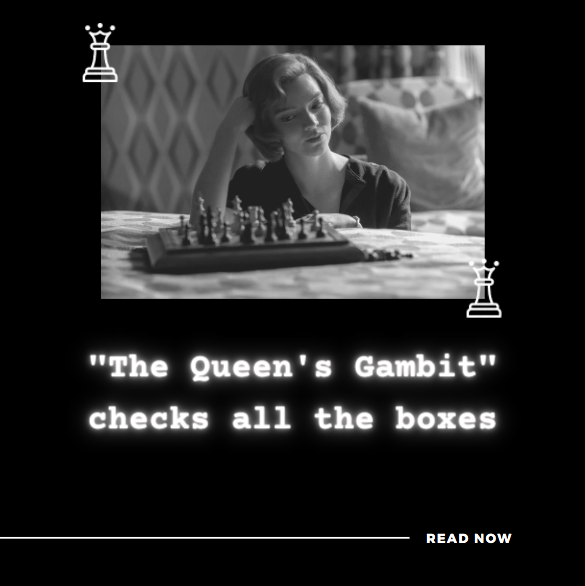In all honesty, the headline says it all. The newly launched Netflix miniseries boasts and approval rating of a 100% on Rotten Tomatoes as of 13th November 2020 and for good reason. It is witty, excellently shot, historically accurate, but more importantly, gives sporting dramas (and coming-of-age stories) a refreshing and much needed change.
This riveting story features Anya Taylor-Joy as Elizabeth “Beth” Harmon – a chess prodigy with what can be seen as a run-of-the-mill tragic backstory and internal demons. However, the fast paced and non-linear sequence of events gives the series a storybook like feel. The opening sequence features a disorderly Beth who functions on a steady diet of booze and opioids as she gets prepped for yet another game of chess. As the story builds the past is revealed bit by bit and Beth’s childhood in a conservative, child tranquillising orphanage breaks down the “why?” behind the stoic, emotion void demeanour seen in our protagonist’s teenage years.
Beth finds solace in Chess, it helps her channel the effects of addiction and a frankly disturbed upbringing in a positive manner to an avenue where she has control. The context given in the form of a troubled biological mother and an even more troubled yet well wishing adoptive mother, implicitly emphasises the need for chess – why she turned to it. In-fact the only point of contention I have with “Gambit” is that I would have loved to see more of this internal see-saw – the fragile balance between sheer brilliance and temptation to throw it all away.
I was also pleasantly surprised to see that romantic subplots remained just that – subplots. Often shows centring teenagers fall into the trap of making the main storyline secondary. “Gambit” wisely runs away from this overdone idea and creates multiple intricate relationships with supporting characters having their own arcs, that ultimately help generate the illusion of passage of time.
Set during the Cold War, and giving a brief insight into life at that time; “Gambit” also brings up a long overdue debate around women in Chess. Although the series doesn’t directly delve much into the ingrained societal viewpoints that exist to this day, it does effectively highlight the gender disparity – leading to instigation of real-life conversation regarding the same.
Recommended reading to better understand the issue with sexism in chess
- www.nytimes.com/2020/11/10/arts/television/queens-gambit-women-chess.html
- feminisminindia.com/2020/11/10/netflixs-the-queens-gambit-check-mates-gender-tropes/
There are long standing rivals, complex friendships and a consistently enthralling sense of suspense the curates this miniseries into a moving coming-of-age production. This was possible, in my opinion, due to three fundamental ideals that “Gambit” got correct – a charming lead who could carry the complexity of the character through a myriad of subtle expressions, a wardrobe department that brought their A-game with polished 1960’s attire that injected a classic American glamour in this whole affair and, cinematography that bound together the patchy nature of the time line with seem-less transitions and tasteful CGI.
Whether “The Queen’s Gambit” is up your alley or not, I strongly recommend you give yourself a chance to fall in love Walter Tevis’s characters and Scott Frank’s genius direction. You may not be “won over” by this period piece as I was but it will definitely “draw” you in.
